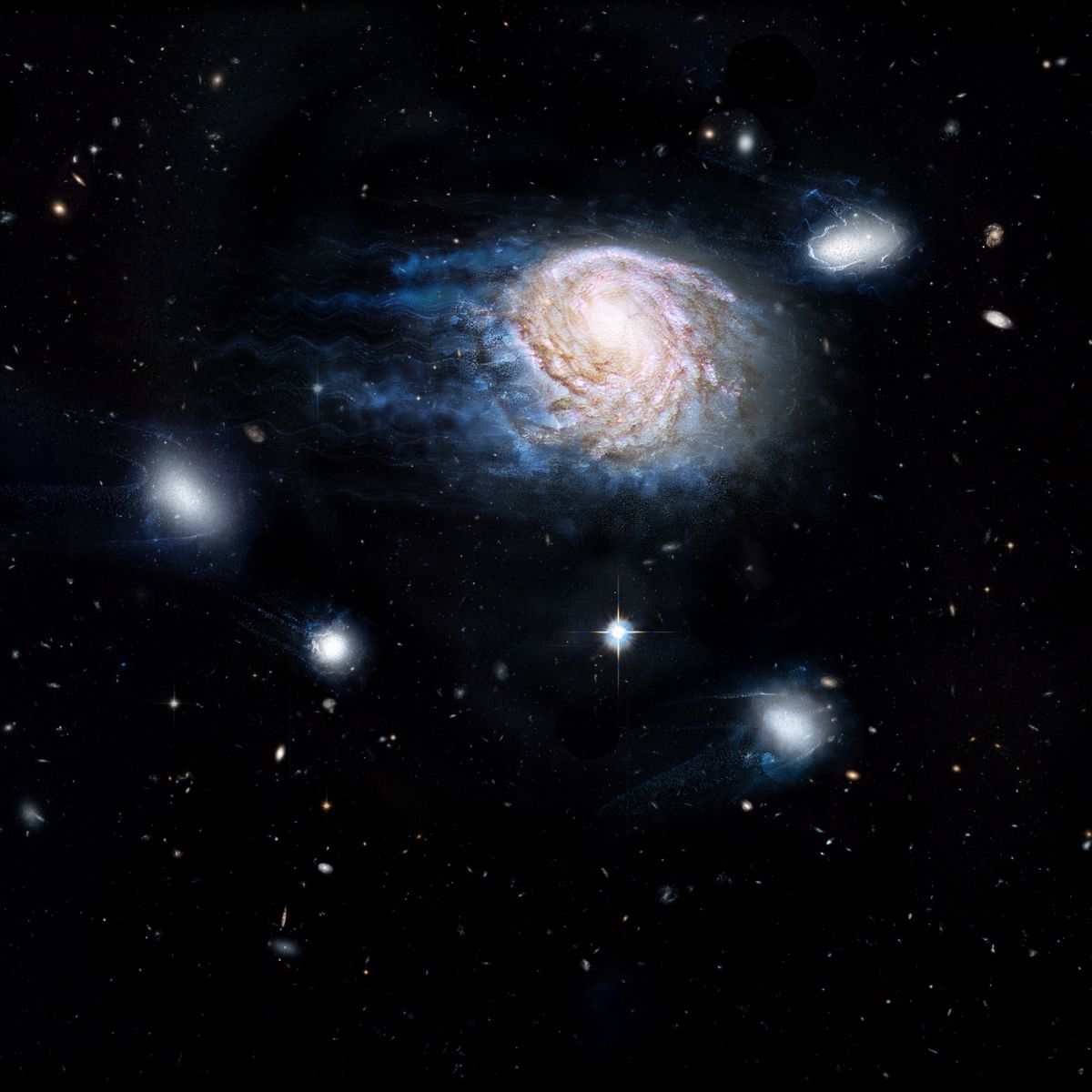
The background datasets were scaled to account for differences in Both source and background (filter-wheel closed)Įvents lists were vignetting corrected using the sas task evigweight. Use of filter-wheel closed datasets to constrain the instrumental and particleĬomponents of the background. The background was accounted for accurately using theĭouble subtraction method described in Croston et al. Spectral and spatial analysis were carried out using the filtered XMM-Newton events lists. Remaining after GTI filtering were 5677 s, 6032 s and 3335 s for the MOS1, MOS2

Used to identify time periods of high background rate, and thresholds of 0.4Ĭts s − 1 (MOS) and 0.7 cts s − 1 (pn) were applied. Lightcurves in the 10 – 12 keV (MOS) or 12 – 14 keV (pn) energy bands were That accurate measurements could be made in low surface-brightness regions. The dataset was affected byīackground flares, so filtering for good time intervals was applied to ensure Single and double events (PATTERN ≤ 4), and FLAG=0, and the MOS data wereįiltered according to the standard flag and pattern masks (PATTERN ≤ 12Īnd #XMMEA_EM, excluding bad columns and rows). The pn data were filtered to include only Using the XMM-Newton SAS version 6.0.0, and the latest calibration filesįrom the XMM-Newton website. The X-ray emission from the intragroup medium. (observation ID 0112271101, carried out on 2003 June 30th) was used to study This group is also known as RASSCALS NRGb 177 (Mahdavi et al., 2000), GEMS NGC 4065 (Osmond &Ī short archival XMM-Newton observation of the environment of radio source NGC 4061 ( 2006) classify UGC 07049 as strongly HI deficient using Arecibo data and find it has a total HI mass of 2 × 10 9 M ⊙. Our VLA D-array data show numerous interactions among HI rich group members outside of the core of the group (FreelandĮt al., 2009). This group has an average velocity of 6995 ± 48 k m s − 1 ( z = 0.0233), a velocity dispersion of 416 ± 35 k m s − 1, and extended X-ray emission from the intragroup medium (Mahdavi & This group is a unique laboratory for studying ram pressure stripping as we have two independent means of measuring the density of the intergalactic gas in this system which also contains an H i deficient, edge-on, Sc galaxy (UGC 07049). Here we present observations of the NGC 4065 group, located in the Coma Supercluster. Which physical mechanisms are important in altering the morphology and SFR of galaxies in the group environment? The behavior of these relations over the separate regimes indicates a change in the dominant physical mechanisms influencing the evolution of galaxies across these environments.

These trends continue till ∼ 0.3 R v i r (projected density > 6 M p c − 2) where the fraction of intermediate types decreases and the elliptical fraction dramatically increases (GotoĮt al., 2003). At a characteristic radius of ∼ 1 R v i r (projected densities of 1 − 6 M p c − 2) the fraction of intermediate type (S0) galaxies begins to increase while the late-type disk (Sc) galaxy fraction decreases and the SFR decreases sharply (Gómez et al., 2003).

In the lowest density regions farthest from cluster centres (with projected densities 1 R v i r) the relation is flat, suggesting that the physical mechanisms responsible for changes in morphology are not effective in this regime. The morphology-density relation shows distinct behavior over three separate regimes which can be characterized in terms of the projected galaxy density or the radial distance from the cluster centre (in terms of the virial radius, R v i r, defined by the Girardi et al. (1991,1993) argue that these reflect a tighter and more fundamental morphology-radius relation where the distance from the cluster centre is the independent parameter. These observations are known as the morphology-density and SFR-density relations, although Whitmore et al. Galaxy characteristics, like morphology and star-formation rate (SFR), are observed to change with environment where high density regions like clusters are characterized by a larger fraction of elliptical galaxies and a lower star-formation rate than seen in the field (Dressler, 1980 GotoĮt al., 2003 Gómez et al., 2003).


 0 kommentar(er)
0 kommentar(er)
